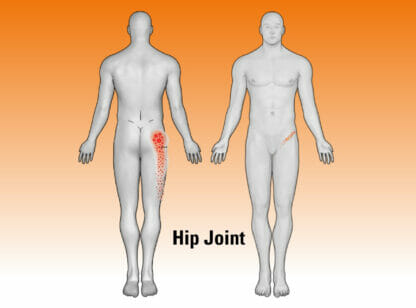In this modern “hi tech” world, chiropractic is decidedly “low-tech” in nature. Based on manual manipulations and founded over 100 years ago, studies to support its effectiveness have been slow to surface. Fortunately, numerous scientific studies over the past 25 years have established chiropractic to be an evidence-based modality. These studies have found the practice to be safe and effective, and further suggest that the chiropractic approach to reducing nerve disturbance along the spine may enhance the ability of the brain and nervous system to regulate the body.
Science consists of the systematic pursuit of knowledge involving the recognition of a problem, the collection of data through observation and experiment, and then testing the resulting hypotheses. As such, today’s chiropractic is quite scientific and is based on the fact that “the nervous system function is to control and coordinate all other organs and structures, and to relate the individual to his environment.”1
One of the largest studies was conducted in 1991 by neurologists, medical orthopedists and chiropractors on behalf of the RAND Corporation, an internationally-recognized nonprofit research organization. The results found spinal manipulation as used by chiropractors to be an effective and appropriate treatment for low back disorders. Additionally, researchers found that patients treated by manipulation improved significantly faster as compared to those treated by traditional medical care or having no treatment at all.2
In 1994, the U.S. government’s Agency for Health Care Policy and Research commissioned a five-year study to assess various methods of treating low-back pain. The panel of researchers included medical doctors, chiropractors, physical therapists and nurses. After reviewing nearly 4,000 scientific studies, the 23-member panel of experts set forth national guidelines to establish safe, effective and cost-containing approaches to managing acute low-back pain. Included was spinal manipulation as it was determined to be effective in reducing pain and speeding recovery.3
In June 1998, a second breakthrough study was funded by the U.S. government’s Agency for Health Care Policy and Research (AHCPR). This collaboration among scholars, researchers, medical doctors and chiropractors resulted in a 100-page report highlighting the valuable role of chiropractic care. The report states: “It has taken 100 years of self-directed, bootstrap efforts utilizing internal funds to bring chiropractic in to the mainstream of healthcare…today the scope of chiropractic research now parallels that of medical research.”4
The National Institutes of Health has also funded several studies on chiropractic care including the development of a curriculum to increase the understanding of evidence-informed practice in chiropractic educational institutions. Their on-going support includes a developmental center for research in chiropractic at the Palmer Center for Chiropractic Research. Investigators at Palmer and other partnering institutions continue to conduct basic and clinical research on chiropractic treatment approaches, how they work, and diseases and conditions for which they may be most helpful.5
The results of studies such as these validate that scientific data does indeed support chiropractic as a proven treatment modality. Additionally, chiropractic is widely viewed as a complementary treatment in traditional medical programs, and chiropractic doctors often work in conjunction with medical physicians to ensure patients receive a comprehensive care approach to alleviate symptoms and expedite the healing process.
Dr. Le Roy is a doctor of chiropractic and can be reached at 760.771.4800.
References: 1) Gray’s Anatomy, Henry Gray F.R.S. Twenty-Ninth American Edition, Chapter 1, pg. 4; 2) The RAND Health: http://www.rand.org/content/dam/rand/pubs/research_briefs/2009/RB4539.pdf; 3) National Library of Medicine. 14; Acute Low Back Problems in Adults. Clinical Practice Guidelines: AHCPR Publication No.95-0642; 4) Cherkin D, Mootz R. Chiropractic in the United States: training, practice, and research [AHCPR Publication No. 98-N002-December 1997]; 5) National Institutes of Health: http://nccam.nih.gov/health/chiropractic/introduction.htm











































Comments (0)